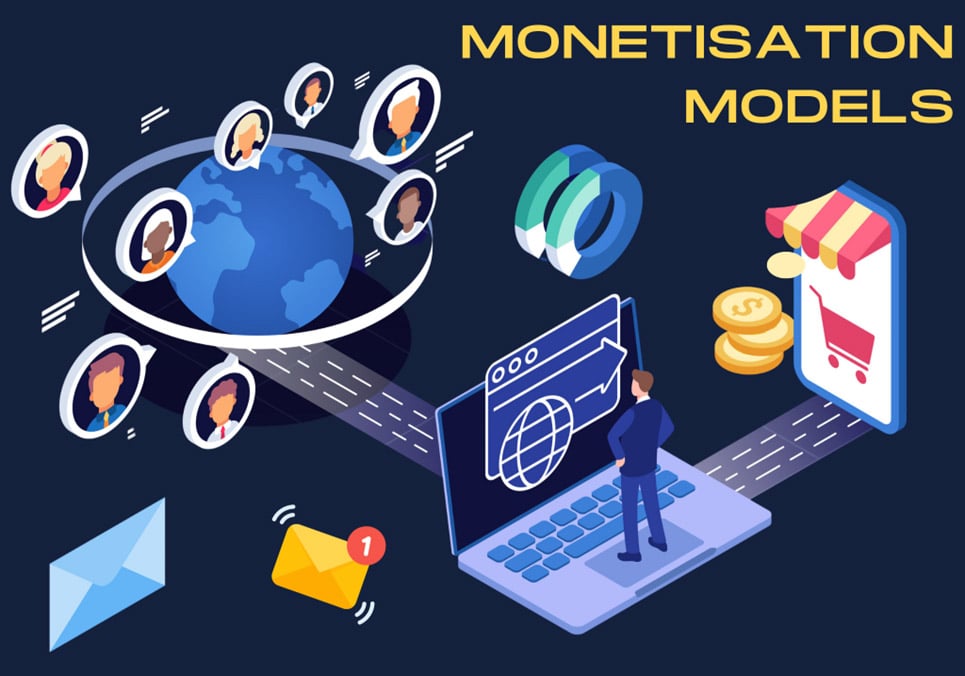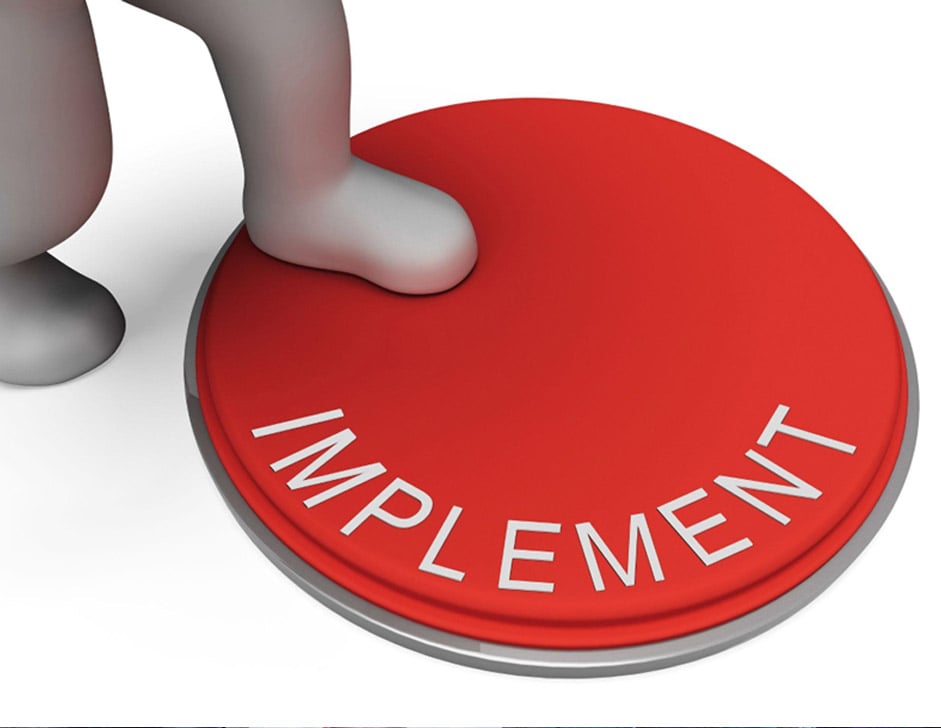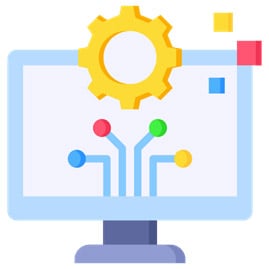👥 250,000 Trained
🏆 9 x Award Winners
⭐ 96% Review Rating
📈 24 Years of Proven Results
Written by Sean McPheat | 

In today’s competitive business landscape, understanding the role of monetisation models in the workplace is crucial for maximising sales performance.
Sales training programmes often emphasise the significance of implementing effective monetisation strategies to drive revenue growth and boost profitability. By adopting various monetisation models, businesses can optimise their sales processes and capitalise on new opportunities.
Explore the synergy between monetisation models and sales training methodologies, uncovering strategic approaches to enhance organisational sales performance.

Monetisation refers to the process of converting something into revenue.
In the context of business, it involves creating revenue streams from products, services, or data through various models that dictate how consumers are charged for value.
Effective monetisation not only generates income but also generates growth by aligning your product or service offerings with market demands and customers’ willingness to pay.
From a SaaS company offering subscription tiers for their CRM platform, to a car rental firm continually hiring the same vehicle to different drivers, there are a wide range of ways to monetise a product or service.
How you choose to do so will of course depend on the nature of your product or service, the market in which you operate, your customer’s preferences, and how your competitors monetise their offerings.
The role of monetisation in sales cannot be overstated. Revenue is of course the bottom line. There’s no value in securing additional free subscription sign ups if your revenue drops to the point where your business model becomes unsustainable.
“If something can’t be monetised, it ain’t a business. And if there’s no path to profitability, then it has no worth.”
– Hendrith Vanlon Smith Jr, CEO of Mayflower-Plymouth
The investment and consultancy CEO has a point, however harshly expressed.
There are whole sectors whose monetisation continues to prove problematic. Consider social media, for instance. Customers expect it to be free, which makes any attempts to sell subscriptions (or the blue tick marks on X) almost futile.
Instead, advertising led models, which can irritate users if implemented badly, proliferate on social media. Even then, these products struggle. By offering significant value for free, they devalue the add-ons that allow monetisation.
Monetisation strategy directly influences how a product or service is perceived in the market, affects customer acquisition and retention strategies, and ultimately impacts the profitability of a company.
Well-conceived monetisation ensures that the value proposition is clear and compelling, essential for closing sales and creating customer loyalty.
Fortunately, there is no shortage of ways to monetise a product or service, from direct sales to pay-per-use and transaction fees. Here we’ve identified nine of the easiest ways to transform that bright idea into reliable revenue streams.

Let’s begin with the most obvious method of sales. You produce a product or service, which you sell to your customers, who then own it. There are no third-party intermediaries involved, so this method benefits from its simplicity, overall.
Direct sales allow companies to have full control over the sales funnel process, customer service and relationships, and pricing strategy.
This approach is common in B2B environments and can lead to higher margins.
Examples: Xerox selling photocopiers and printers direct to businesses.
A subscription model charges customers a recurring fee at regular intervals for access to a product or service.
This model is beneficial for ensuring steady cash flow and building long-term customer relationships. It is widely used in software, media, and service industries.
Most software companies offer tiered subscriptions, with each price rising point providing access to either a wider range of features, or most enabled users.
In recent years, recognising the convenience and simplicity that this strategy offers, many fast-moving consumer goods (FMCGs) traditionally sold directly have diversified into subscription models. This approach helps tie customers into regular purchases in exchange for discounts and access to limited edition products or offers.
Think food subscription boxes, men’s grooming supplies, or even pet food. Other services commonly using this model include internet service providers, mobile phone companies and streaming networks.
The freemium model offers basic services for free while charging for advanced features or functionalities.
This model is particularly effective in the tech industry as it allows users to try the product before committing financially, thus lowering the entry barrier, and potentially increasing the customer base.
Many SaaS companies use this model including HubSpot’s CRM platform, which has a free version, plus two subscription tiers for “professional” or “enterprise” customers.
Free trials are another way to offer a taste of a product or service before the customer commits. In software, this usually means a fully functional version with a time limit on usage, whereupon locks the user out unless they sign up for a paid subscription.
In this model, customers are charged based on their usage levels. It is ideal for products or services where customer demand fluctuates, allowing flexibility and scalability.
Utility companies and cloud service providers commonly use this model. Some companies combine a subscription model with a pay-per-use charge. On-street car hire company ZipCar is a good example of this. Users must first sign-up to the service and then can choose between a per-use basic membership, or a subscription-based service.
The downside from a company’s point of view is that economic downturns can have a sudden knock-on effect on revenue since it’s an easy expense for users to cut. Revenue too can only be calculated based upon statistical estimates derived from past performance plus any projected growth.

The advertising model generates revenue by offering advertising space within the product or platform. This model is prevalent in online businesses where large volumes of user traffic are converted into ad views and clicks, providing revenue without charging the users directly.
Social media platforms generally operate on this basis and this is also referred to as Social Selling. Usually, the customer doesn’t directly pay for the service, they effectively “pay” by being subject to the marketing messages of third parties.
Many social media platforms such as Instagram or TikTok also sell “boosted posts” or e-commerce facilities to their users, as well as selling advertising space to third parties.
Advertisers benefit from being able to directly target highly specific segments of the platform’s users, delineated by area, age, gender, or interests. They can use trending hashtags or keywords to generate exposure as well as paid-for clicks.
The challenge with such a model is in creating a platform which grows organically and reaches a large audience of free users, making it a desirable place to advertise, without irritating users with unsolicited content.
As recent controversies surrounding X and TikTok have shown, the high-profile nature of these social networks makes them vulnerable to political interference or PR calamities.
This model allows companies to licence their products or technologies to other businesses for use over a specified period. Licensing can provide a stable income stream and is commonly used in software and media.
Microsoft 365 is an example of this – it’s licensed to its purchaser for a limited number of devices, and additional licences can be bought to exceed this limit. If an office buys 50 PCs, they’ll also have to buy a corporate licence to cover Microsoft products installation across those devices.
The problem with such a model is that, unlike an annual subscription, buyers may feel aggrieved if they are made to re-purchase their licence too frequently, or if they feel tied-in to a contract. However, the software supplier must keep upgrading their systems to provide bug fixes, and security updates, and therefore incur ongoing costs, which they must eventually recover through re-selling licences.
There has been recent concern that cloud computing services using the licensing model may be open to charges of anticompetitive and unfair licensing practices. This has been extensively explored in the report Unfair Software Licensing Practices: A Quantification of the Cost for Cloud Customers by Professor Frédéric Jenny.
Certainly, this is a challenging model when rolled out to enterprise scale, requiring a complex balancing act between risk and reward.
In this model, businesses charge a fee for each transaction processed through their platform. This model is prevalent in financial services and online marketplaces.
Examples of companies using this Transactional Selling model include PayPal, eBay, or Amazon. Amazon charges transaction fees to the seller only.
Amazon’s publishing wing, Amazon KDP is a variation of this model, offering two tiers of royalty payments to the authors self-published on their platform. Once the royalty is paid, the remainder is retained by Amazon as their fee for publishing services.
Companies offer additional services for an extra fee on top of a base service or product. This can include extended warranties, enhanced customer support, or additional features.
This model can be combined with a freemium basic product, a common approach for apps, including games, lifestyle apps, and productivity tools. The basic download is free, but the app offers “in-app purchases,” encouraging the user to spend money to move to a new level or obtain additional benefits.
Examples of brands using this model include Tinder, Rovio (Angry Birds), and Strava.
A combination of two or more monetisation models to leverage the benefits of each. Many businesses use hybrid models to diversify their income streams and adapt to customer preferences.
Brands can either offer users a choice of how they pay (like ZipCar) or have price tiers with optional add-ons for advanced features (many SaaS companies), combining the subscription and value-added methods.
Companies who use this approach for revenue maximisation include GitLab (per user per month subscription plus storage bundles (value-added) and John Lewis (direct sales plus extended warranties—a value-added component).

Given the variety of monetisation models on offer, it pays to think carefully about which one you want to implement. There are several aspects to consider, including your distribution method, technology, the marketplace, and customer profile.
Let’s break down those components.
Conduct thorough market research to understand customer needs and how they align with your monetisation options.
What do your competitors do? Do they offer subscription tiers, or a one-off purchase with add-ons? Could you carve out competitive advantage by doing things a little differently? What do customers expect?
If you’ve created a dating app, then users will almost certainly expect a freemium version, so they can check out the potential of the app working for them, before committing to regular monthly outlay.
These are all vital considerations and will help you build a case for one monetisation model over another.
Identify different customer segments and tailor monetisation strategies to match their specific needs and payment capabilities.
If you largely sell your product to middle-class professionals, then a premium monthly subscription model might work best. However, if young people are your target market, then perhaps a free version plus paid-for add-ons might appeal.
Alternatively, you could adopt a hybrid approach, and offer users a range of ways to pay—per use, per month, or a one-off annual payment.
You’ll want to incentivise long-term commitment by making annual one-off payments better value than month-by-month payments, i.e. annual subscription = £100 or £12 per month.

There are several different technological innovations you can integrate to help maximise revenue. By incorporating the right tools, you can better manage your chosen revenue model, ultimately driving profitability and growth.
Some of the main tools you might consider include:
Automated Billing Systems (h4)
These ensure accurate and timely invoicing, minimising delays and errors that can affect cash flow.
Such systems can handle complex billing cycles, multiple payment methods, and international currencies, making them indispensable for subscription-based and usage-based models.
They also allow for the automatic application of discounts, promotions, and variable pricing, which can help attract and retain customers.
Subscription Management Platforms (h4)
Subscription management platforms ease the administration of subscription services, from sign-up to renewal and cancellation.
They help businesses increase customer lead engagement by sending timely notifications and reminders about subscription renewals, exclusive offers, and new features. This ongoing engagement reduces churn rates and boosts customer lifetime value.
Best of all, such systems free up time for human ingenuity, so you can concentrate on innovating new products, services, or expansions of service.
Customer Relationship Management (CRM) Tools (h4)
CRM tools these days use AI to provide insight into customer behaviour and preferences.
These tools can segment customers based on their interactions and responsiveness to different monetisation strategies, allowing you to tailor your offerings more effectively.
By understanding customer needs better, businesses can optimise their sales approaches and improve conversion rates.
Need help deciding if a CRM is the right choice for you AND which CRM System to use? Check out these articles:
Data Analytics and Reporting (h4)
Data analytics tools collect and analyse vast amounts of data to generate actionable insights. This proves essential for helping you make informed decisions about pricing strategies and product offerings.
Real-time reporting capabilities enable businesses and solo entrepreneurs to monitor their revenue streams and adjust strategies promptly to capitalise on market opportunities or address emerging challenges.
AI-Powered Predictive Analytics (h4)
Sales Forecasting and Predictive Analytics are revolutionising the sales landscape. But what if you took analytics one stage further with AI? AI-driven predictive systems can forecast future trends in customer behaviour, market conditions, and revenue potential.
These predictions help businesses anticipate changes in demand and adjust their monetisation strategies proactively, ensuring they remain competitive and relevant.
Cloud Technologies (h4)
The use of advanced CRM or data analytics generates enormous quantities of data in real-time, which must be stored securely, providing you with easy access, even on the go.
Cloud-based solutions offer scalability and flexibility, qualities essential for growing businesses. They allow companies to expand their service offerings without significant upfront investment in IT infrastructure.
By integrating these technological solutions, you’ll build a robust framework for revenue maximisation.

To maximise efficiency in your chosen monetisation model, using AI and automation is essential. These are the two most significant areas for tech stack investment. They should repay your initial investment many times over.
AI delivers complex insights from the vast pool of customer behaviour data you’ll soon have at your disposal. It can also engage in competitive analysis, to help you find out what your rivals are doing, and perhaps more importantly, what they are not doing.
Much of this insight will come from consumer review platforms, in which people feel free to discuss when a product is overpriced, undervalued, or has an unnecessarily complex monetisation mechanism.
Automation in subscription management can alert customers about renewal dates, ensuring continuous service and consistent revenue flow.
Ongoing evaluation of your monetisation strategy is vital. What worked in the past may not be fit for the future, and there are changes and trends in the way people pay for products and services.
Regularly test and optimise every aspect of your monetisation strategies to stay ahead in a dynamic market environment. This constant refinement ensures that your offerings remain relevant and appealing to your target audience, which is vital for maintaining competitive edge and maximising revenue.
Techniques for Effective Testing (h4)
This process may involve a variety of testing methods:
A/B Testing: Compare two versions of pricing structures to determine which one performs better in terms of customer response and revenue generation.
Feature Experimentation: Test the various features of your service offering to see which ones are most valued by customers, potentially leading to enhanced service packages.
Subscription Model Adjustment: Modify your subscription tiers based on detailed analysis of customer feedback and usage data to better meet the needs and preferences of different user segments.
Utilising Analytics: Deploy analytics tools to measure the effectiveness of different strategies and changes to your monetisation approach.
These insights will guide further refinement, helping you to craft offers that more accurately match market demand and customer expectation.
The start of any monetisation strategy is building a good sales team, and offering the training appropriate to the revenue generating model you employ.
To maximise the potential of your revenue strategies, it is paramount to invest in comprehensive training for your sales team. Specialised training programmes should encompass both fundamental selling techniques and a thorough understanding of your company’s specific monetisation models.
Tailored sales training programmes enable your team to:
Articulate the Value: Clearly explain the benefits and nuances of different monetisation models to potential customers.
Customise Solutions: Tailor monetisation strategies to better fit the specific needs of customers, thereby enhancing customer satisfaction and loyalty.
Invest in advanced sales training courses that provide deep dives into selling skills, negotiation tactics, and strategic sales planning.
This focused approach ensures that your team not only understands the products and services they’re selling but also excels in conveying their value to customers.
The effective implementation of monetisation strategies helps drive sales and increase sales volume.
But your monetisation strategy is only as good as the ability of your team. By offering Selling Skills Training, you align strategy and sales ability.
You can boost your sales team’s effectiveness with:
Targeted Training: Offer targeted selling skills training to address specific areas of need within your sales pipeline processes.
Personalised Development: Utilise Sales Personality Tests to tailor training and development efforts to individual strengths and weaknesses of sales personnel.
This tailored approach not only optimises your sales team’s performance but also contributes significantly to your business’s overall success.
All of this is something that we can help with at MTD. We offer a variety of Sales Training Courses, Customised Sales Training solutions.
Alternatively take a look at our Sales Assessments too.

Sean McPheat
Managing Director
MTD Sales Training
Updated on: 23 May, 2024
Originally posted: 24 November 2012
Related Articles

Search For More
